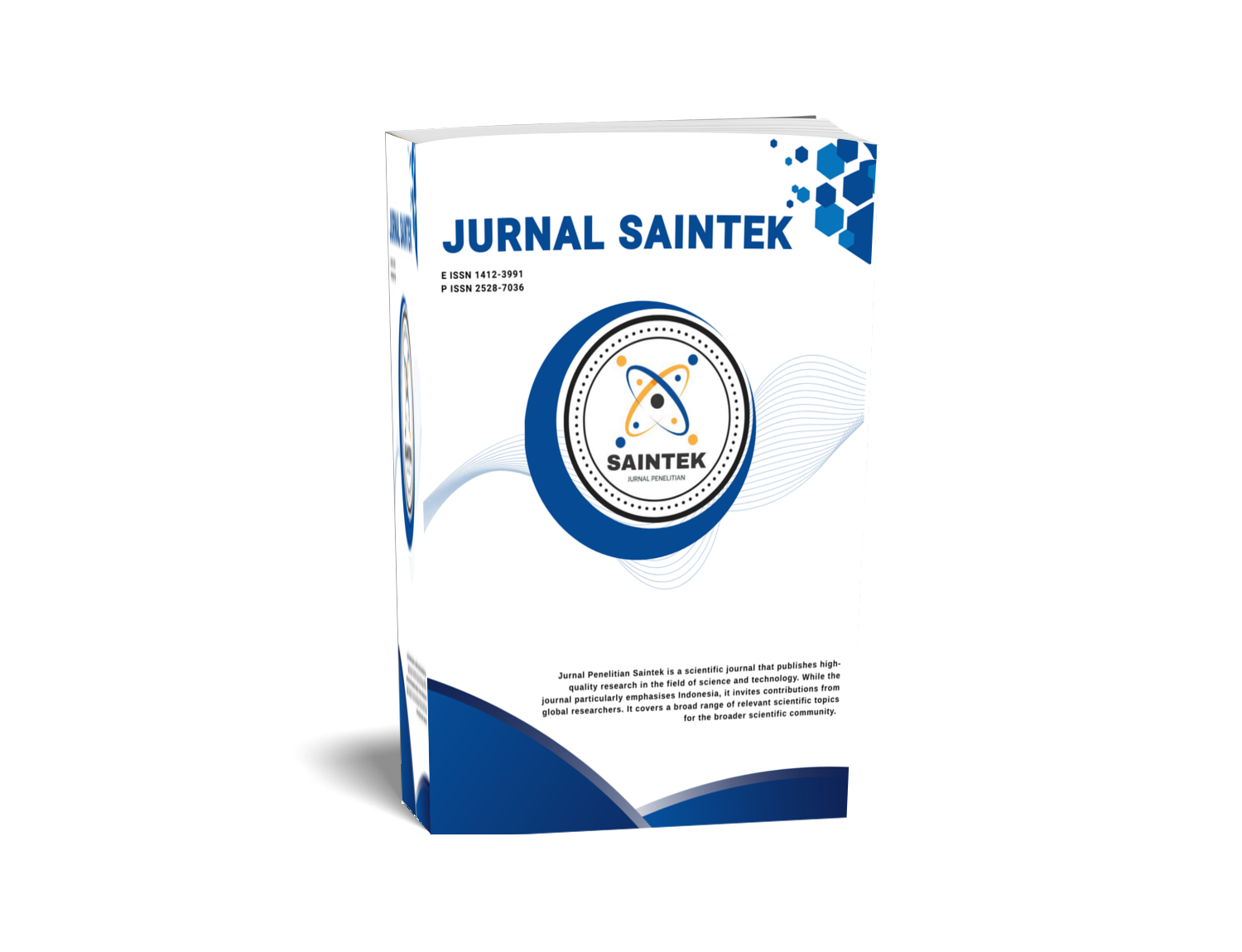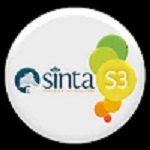SYNTHESIS AND CARATERIZATION OF SNO2 AS A DEVELOPMENT EFFORTS WHITE TIN PRODUCTS TO IMPROVE NATIONAL DEVISES
DOI:
https://doi.org/10.21831/jps.v16i2.3385Keywords:
SnO2, IR spectroscopy, X-ray diffraction, SEMAbstract
Long-term goal of this research is to apply nanotechnology in the development of downstream products of tin to increase the national foreign exchange. As a preliminary study, SnO2 was synthesized by dissolving tin metal in concentrated HCl followed by addition of concentrated NH4OH in dropwise. The precipitate was filtered, dried, and partially characterized using IR spectrophotometer FTIR-8300/8700 model in the range of wave number of 400 cm-1 to 4000 cm-1, whilst the rest was then heated in a furnace at temperature about 900 °C for 4 hours. The oxide was then cooled and characterized by using XRD Zhimadsu S6000 diffractometer using monochromatic Cu KÄ® radiation with a wavelength (Èœ) of 1.5406 í… in the 2È™ range 5o to 90o , and scanning electron microscope (SEM) JEOL T330 A operating at 15 keV. The crystallography aspects of SnO2 was studied based on the X-ray diffraction data (XRD) which was analyzed with Rietveld method using the WinPLOTR program. The SnO2 oxide was found to be tetragonal P42/mnm space group having lattice parameters of a = b = 4.7337(2) Ç– and c = 3.1841(3) Ç–. The particle size of the SnO2 oxide was found to be about 35.39 nm.
References
Baur, W.H. (1956). Acta cryst., 9, 515-520. 108 10911 Jurnal Penelitian Saintek, Vol. 16, Nomor 2, Oktober 2011
Carlin, F. (2010). Mineral information, USGS. http://minerals.usgs.gov/minerals/. Diakses pada tanggal 30 Oktober 2010.
Chowdhuri, A., Haridas, D., Sreenivas, K. and Gupta, V. (2009). International Journal on Smart Sensing and Intelligent Systems, 2, 540-548.
Cullity, B.D. and Stock, S.R. (2001). "˜Elements of X-ray diffraction'. PrenticeHall Inc.: Reading, 167-171.
Dibb, A., Cilense, M., Bueno, P.R., Maniette, Y., Varela, J.A., and Longo E. (2006). Materials Research, 9, 339–343.
Evans, C.J. and Karpel, S. (1985). Organotins compounds in modern technology. Amsterdam: Elsevier.
Fu, G.C.(2002). Pure Appl. Chem., 74, 33- 36.
Giuntini, J.C., Granier, W., Zanchetta, J. V. and Taha, A. (1990). J. Mater., Sci. Lett. 9, 1383.
Greenwood, N.N. and Earnshaw, A. (1984). Chemistry of the elements. Oxford: Pergamon. Gregory, O.J., Luo, Q. and Crisman, E.E. (2002). Thin Solid Films, 406, 286-293.
Holleman, A.F. and Wiberg, E. (2001). Inorganic chemistry. San Diego: Academic Press.
Llorca, J., Homs, N., Fierro, J.L.G., Sales, J., and Piscina, P.R. (1997). J. Catal., 166, 44–52.
Mishra, S., Ghanshyam, C., Ram, N., Singh, S., Bapjai, R.P., Bedi, R.K. (2002). Bulletin Material Science, 25(3), 231-234.
Omata, K., Yagita, H., Shikada, T., Fujimoto, K. and Tominaga, H. (1987). Chemistry Letter., 2397-2398.
Pamungkas, P. (2010). Kajian pertambangan timah kita. http://klastik.wordpress.com, Diakses pada tanggal 1 Maret 2010.
Punnoose, J.H., Thurber, A., Engelhard, M. H., Kukkadapu, R.K., Wang, C., Shutthanandan, V. and Thevuthasan, S. (2005). Phys. Rev., B 72(8), 054402.
Roisnel, T. and Rodriguez-Carvajal, J. (2010). Win PLOTR. cdifx.univrennes1.fr/winplotr.
Socrates, G. (1980). Infrared characteristic group frequencies. Wiley: New York.
Taylor, F.S. (1942). Inorganic & theoretical chemistry. London: Heineman.
Taylor, R.G. (1979). Geology of tin deposits. Canada: Elsevier Scientific Publishing. Wang, C-M.,
Wang, J-F., and Su, W-B. (2006). Journal of the American Ceramic Society, 89 (8), 2502–250.
Young, R.A., The rietveld method, 1st ed. (1993). New York: Oxford University Press.
http://adsabs.harvard.edu. Diakses pada tanggal 10 Februari 2010.
http://id.wikipedia.org/wiki/Timah. Diakses pada tanggal 23 Februari 2010.
http://sn-tin.info/production.html. Diakses pada tanggal 3 Maret 2010.
http://timah.com/. Diakses pada tanggal 23 Februari 2010.
http://www.biodiesel.gov.br. Diakses pada tanggal 10 Februari 2010.
http://www.tekmira.esdm.go.id. Diakses pada tanggal 1 Maret 2010.
http://www.lme.com/tin_graphs.asp. Diakses pada tanggal 1 Maret 2010. US patent 4130673.
Downloads
Published
How to Cite
Issue
Section
Citation Check
License
Who Can Submit?
Any individual may submit an original manuscript for consideration for publication in Jurnal Penelitian Saintek as long as they hold the copyright to the work or are authorized by the copyright owner(s) to submit it. Authors retain initial ownership of the copyrights to their works prior to publication, except in cases where, as a condition of employment, they have agreed to transfer copyright to their employer.
User Rights
Jurnal Penelitian Saintek is an Open Access journal. Users are granted the right to read, download, copy, distribute, print, search, or link to the full texts of articles, provided they comply with the conditions of the Creative Commons Attribution-ShareAlike License 4.0 (CC BY-SA 4.0).
https://creativecommons.org/licenses/by-sa/4.0/
Author Rights
Authors retains copyrights.
Jurnal Penelitian Saintek by http://journal.uny.ac.id/index.php/saintek is licensed under a Creative Commons Attribution-ShareAlike 4.0 International License.









